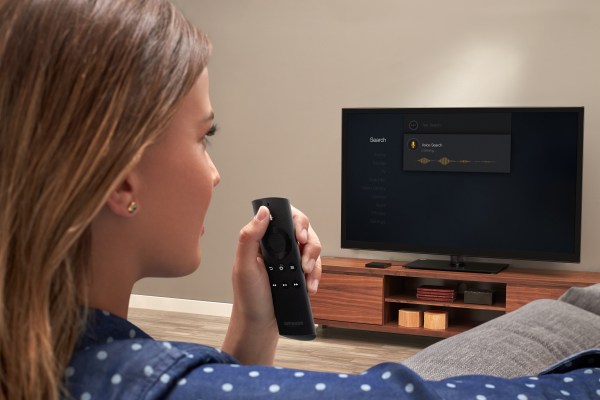Amazon spent a lot of time talking about consumer reviews of competing devices when it unveiled the Amazon Fire TV yesterday, and that provides tremendous insight into its product development process. As the largest online retailer of goods in the world, the company has a unique line on shopper sentiment data – its online reviews constitute possibly the single-largest repository of expressed consumer sentiment available anywhere.
Like major brick-and-mortar retailers before it, this means Amazon can see what’s doing well, partner with manufacturers to produce its own version, save on marketing, packaging and staff, and then resell that same thing at a lower cost while retaining decently high margins. That’s what Amazon does with its Amazon Basics line of gadgets and accessories, which offers everything from cables to Bluetooth speakers at a fraction of a cost of the versions from the market leaders in those categories.
But it also offers more than that; Amazon’s extensive database of reviews is a treasure trove of possible direction for research, development and product design. That’s because unlike at traditional retailers, Amazon doesn’t just know what is and isn’t selling – they also have customers volunteering information about their sore spots with products they otherwise love, or around features they wish otherwise impressive devices might add in the future. Amazon can’t quite read the minds of its shoppers, but it comes as close as is humanly possible for now.
The results are products like the Amazon Fire TV, and the Kindle Fire line of tablets. These are devices that have been developed with one eye on the competition and another on consumer response to the same; Amazon can see what devices have the potential for sales growth based on sales numbers, and it can also see which have potential to do even better, based on where it sees a lot of interest, but also a lot of expressed wishes for improvements. Imagine a graph with a cluster graph showing “If it just…” as a sentence fragment mentioned frequently in 3 and 4 star reviews – this is what Amazon is no doubt looking at itself, behind the scenes.
This is essentially what Amazon admitted it did with the Fire TV on stage yesterday. Over and over, it displayed a quote from a review on Amazon.com for competing products like the Apple TV, to illustrate a deficiency in the competition it aimed to fix with its own entry. That’s a focus group, but one that’s millions strong, and one that frequently returns to update their impressions after extended periods of time That’s undeniably an invaluable resource. But it could also be a huge burden, one that has the potential to stifle innovation.
“Design By Committee” is a famous phrase used to describe something made by the many, working in concert. It’s diametrically opposed to the concept of the Auteur, who is the lone creator building things based on their inspiration alone. Apple has traditionally been viewed as a company that takes the Auteur approach, and Google is seen as favoring Design By Committee. In reality, the line isn’t so clearly defined, and both probably engage in a combination of both approaches. But Amazon’s strategy seems to be the ultimate expression of a committee take on product design, where the committee includes everyone who uses its international online sales portal.
I’m excited about the potential of Amazon’s customer insight machine, and what it might mean in terms of pushing the needle on emerging product categories, like smart TV devices. But I’m also wary about the chance this model has to result in anything truly category-defining. The Kindle Fire, despite its name, is only really lukewarm taken on its own merits relative to the rest of the tablet field, even considering Android devices on their own. Fire TV is already striking some as a table-stakes device which matches current offerings, but doesn’t really go far enough beyond to get anyone that excited. Herd mentality might be to blame, and Amazon has to prove that its treasure trove of consumer sentiment isn’t just a huge hoard of fool’s gold.
